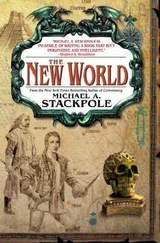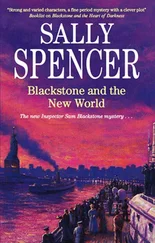Adolphus Greely - True Tales of Arctic Heroism in the New World
Здесь есть возможность читать онлайн «Adolphus Greely - True Tales of Arctic Heroism in the New World» — ознакомительный отрывок электронной книги совершенно бесплатно, а после прочтения отрывка купить полную версию. В некоторых случаях можно слушать аудио, скачать через торрент в формате fb2 и присутствует краткое содержание. Жанр: foreign_antique, foreign_prose, Путешествия и география, на английском языке. Описание произведения, (предисловие) а так же отзывы посетителей доступны на портале библиотеки ЛибКат.
- Название:True Tales of Arctic Heroism in the New World
- Автор:
- Жанр:
- Год:неизвестен
- ISBN:нет данных
- Рейтинг книги:5 / 5. Голосов: 1
-
Избранное:Добавить в избранное
- Отзывы:
-
Ваша оценка:
- 100
- 1
- 2
- 3
- 4
- 5
True Tales of Arctic Heroism in the New World: краткое содержание, описание и аннотация
Предлагаем к чтению аннотацию, описание, краткое содержание или предисловие (зависит от того, что написал сам автор книги «True Tales of Arctic Heroism in the New World»). Если вы не нашли необходимую информацию о книге — напишите в комментариях, мы постараемся отыскать её.
True Tales of Arctic Heroism in the New World — читать онлайн ознакомительный отрывок
Ниже представлен текст книги, разбитый по страницам. Система сохранения места последней прочитанной страницы, позволяет с удобством читать онлайн бесплатно книгу «True Tales of Arctic Heroism in the New World», без необходимости каждый раз заново искать на чём Вы остановились. Поставьте закладку, и сможете в любой момент перейти на страницу, на которой закончили чтение.
Интервал:
Закладка:
At all events, Gore reached Point Victory, King William Land, on May 28, and there built a cairn and deposited the one of the two only records of Franklin's squadron of any kind that have been found. 4 4 The full text of this record will be found in the sketch entitled "The Devotion of Lady Jane Franklin."
It set forth Franklin's discoveries around Cornwallis Land, the wintering at Beechey Island, and the besetment and wintering in the pack of the Erebus and Terror in 70° 05′ N., 98° 23′ W. It ended with the encouraging statement that all were well and Sir John Franklin in command.
From the Crozier record, to be mentioned later, it is known that evil days followed immediately the favorable conditions set forth by Gore. Sir John Franklin was spared the agony of watching his men and officers perish one by one of exhaustion and starvation, for the record tells us that he died on the ice-beset Erebus , June 11, 1847, fourteen days after the erection of the Point Victory cairn. Death was now busy with the squadron, and within the next eleven months seven officers, including Gore, and twelve seamen perished, probably from scurvy.
Franklin's last days must have been made happy by the certainty that his labors had not been in vain, since it was clearly evident that he had practically finished the two labors dearest to his heart – "the completion of the survey of the northern coasts of North America and the accomplishment of the northwest passage." The drift of the ships to the southwest with the main pack carried them to within sixty-five miles of Cape Herschel, and the chart taken by Franklin showed a distance of only fifty-five miles of unknown lands to connect the discoveries of Ross with those of Dease and Simpson. Doubtless the evidence of the drift had been supplemented by an exact survey of the coast by sledge. It is incredible to assume that the energetic Franklin allowed his men to remain inert for eight months within a score of miles of unknown lands.
The ice holding the ships fast until the spring of 1848, it was necessary for Captain F. R. M. Crozier, now in command, to abandon them, as they were provisioned only until July. It was evident that the only chance of life was to reach the Hudson Bay posts, via Back (Great Fish) River, two hundred and fifty miles distant. While it would not be possible to haul enough food for the whole party, they had good reasons to believe that they could live in part on the country. Simpson had reported large game as plentiful along the south coast of the island, while Back spoke of thousands of fish at the river's mouth.
Arrangements for the retreat were made by landing on April 22, 1848, on King William Land abundant supplies of bedding, tentage, provisions, clothing, ammunition, etc., and a large camp was there established. Sledges were strengthened and boats fitted thereon with which to ascend Back River and if necessary to cross Simpson Strait. Great haste was made, for they were ready to start south on April 25, 1848, on which date the record of Gore was supplemented by another signed by Crozier and his second in command, Captain James Fitzjames. It recorded that Gore had returned to the Erebus from his sledge journey in June, 1847, and was now dead, as well as twenty others. It added: "Sir John Franklin died on the 11th of June, 1847. The officers and crew, consisting of 105 souls, … start on to-morrow, 26th, for Back's Fish River." 5 5 For full text, see sketch "The Heroic Devotion of Lady Jane Franklin."
Struggling south along the west coast of King William Land, their progress was slow owing to illness, impaired strength, and their very heavy, unsuitable field equipment. Doubtless some one fell out of the sledge-traces daily, and doubtless, with the spirit of heroic Britons, they acclaimed with cheers their final success when they had dragged their heavy boat to the north side of Simpson Strait and thus actually filled in the last gap in the northwest passage.
Their provisions ran low and Lieutenant John Irving went back to the ship for other supplies, but his heroic zeal was superior to his strength. He was buried on the beach in full uniform, encased in a canvas shroud. 6 6 Many of these details are from Gilder's "Schwatka's Search," a remarkable expedition by these young Americans.
Of his party one at least reached the ship, and died on board of the Erebus or Terror , which, according to the reports of the Eskimos, sank later off the west coast of Adelaide Peninsula. Two others of this detachment evidently endeavored to rejoin the main part, but died in an abandoned boat. With hope and patience they waited for the coming of game that would save their lives, and alongside their skeletons thirty years later were found, standing, their muskets loaded and cocked for instant use.
Graves and skeletons, boats and tents, clothing and camp-gear silently tell the tragic tale of that awful march, which has been traced from Point Victory to Montreal Island through the heroic researches of Hobson and McClintock, of Hall, Schwatka, and Gilder.
No weaklings were they, but as true men they strove with courage and energy to the very end. At least one brave man died on the march, and his skeleton lying on its face verified the truth of the terse tribute of the Eskimo woman who said to McClintock: "They fell down and died as they walked."
One boat's crew perished on the west coast of Adelaide Peninsula, and another entered the mouth of Back River, to die one knows not how or where. The skeleton found farthest to the south is, perchance, that of the last survivor, possibly Surgeon Stanley of the Erebus , as "Mr Stanley" was found carved on a stick found on Montreal Island in 1855.
Of the last survivor, MacGahan, in "Northern Lights," thus surmises: "One sees this man all alone in that terrible world, gazing around him, the sole living thing in that dark, frozen universe. There is no hope for him – none. His clothing is covered with frozen snow, his face is lean and haggard. He takes out his note-book and scrawls, a few lines, as he has done every day. A drowsy torpor is crawling over his senses. It will be sweet to sleep, untroubled by dreams of void and hunger. Through a rift in the clouds glares a red flash of light, like an angry, blood-shot eye. He turns and meets the sinister sunbeams with a steady eye, in which a fiery gleam is reflected, as though bidding defiance. As they glare at each other, this man and this spectre, the curtain is drawn and all is dark."
This we know, that with loyalty and solidarity these heroic men kept fast in their path of daily duty, facing unflinchingly cold and disease, exhaustion and starvation, and, as has been truly said, they thus "forged the last link of the northwest passage with their lives."
Rightly are the loftiest strains of the poet's songs invoked by steadfast fortitude and by the spirit of high endeavor rather than by physical acts of intrinsic value. So for more than a generation, as a reminder of heroic worth, the students of Oxford University have year by year turned into classic latin verse the memorial lines of the poet-laureate. Avoiding mention of the northwest passage, Tennyson raised to Franklin's "memory a monument more lasting than brass" when he penned these enduring lines:
"Not here, not here. The White North has thy bones,
But thou, heroic sailor-soul,
Art sailing on a happier voyage,
Now toward no earthly pole."
THE TIMELY SLEDGE JOURNEY OF BEDFORD PIM
"Huddled on deck, one-half that hardy crew
Lie shrunk and withered in the biting sky,
With filmy stare and lips of livid hue,
And sapless limbs that stiffen as they lie;
While the dire pest-scourge of the frozen zone
Rots through the vein and gnaws the knotted bone."
Интервал:
Закладка:
Похожие книги на «True Tales of Arctic Heroism in the New World»
Представляем Вашему вниманию похожие книги на «True Tales of Arctic Heroism in the New World» списком для выбора. Мы отобрали схожую по названию и смыслу литературу в надежде предоставить читателям больше вариантов отыскать новые, интересные, ещё непрочитанные произведения.
Обсуждение, отзывы о книге «True Tales of Arctic Heroism in the New World» и просто собственные мнения читателей. Оставьте ваши комментарии, напишите, что Вы думаете о произведении, его смысле или главных героях. Укажите что конкретно понравилось, а что нет, и почему Вы так считаете.












